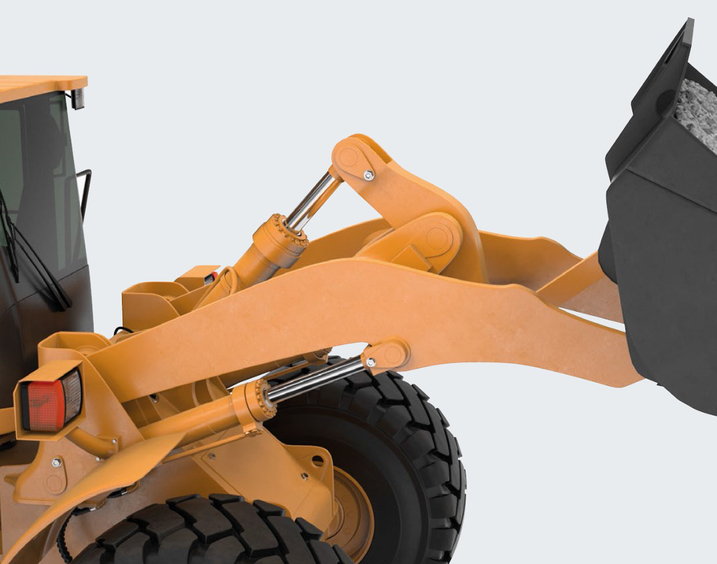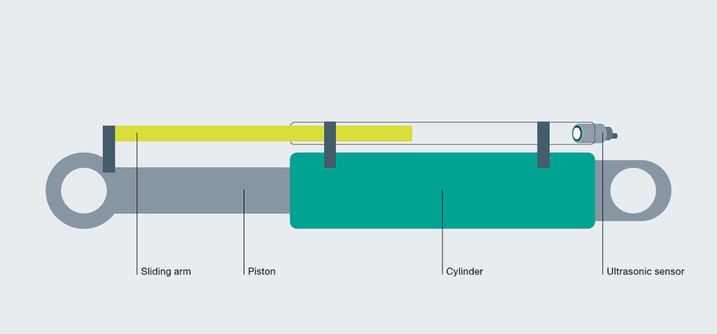Ultrasonic Sensors for Measurement of Piston Position on Machines and Mobile Equipment

The application
Detecting piston position in cylinders is essential for precise monitoring and control of a variety of machines and systems—from pneumatic controls on production lines to hydraulic cylinders on excavators to dumping mechanisms on trucks. Conventional solutions often modify the cylinder by adding magnetic rings to the cylinder rod. High-pressure resistant sensors are installed inside the cylinder wall for end position detection. Both solutions require modification and re-sealing of cylinders.
The goal
The goal is precise detection of piston position without cylinder modifications. Quick and easy installation and reliable data logging are also important—regardless of the piston material, design, and whether it is pneumatic or hydraulic.
The solution

An ultrasonic sensor is used to detect piston position. To do this, a pipe is mounted alongside the cylinder. A sliding arm is installed in the pipe and connected to the piston. On the opposite end of the pipe, an ultrasonic sensor is mounted to detect the distance to the end of the arm. The sensor head with its ultrasonic transducer extends into the pipe. Openings are provided in the pipe to allow displaced air from the sliding arm to be vented.
Depending on cylinder length, UC800-F77S, M18, or M30 series ultrasonic sensors can be used. This solution does not require the cylinder itself to be modified and re-sealed, and it is not under pressure due to its installation outside of the cylinder. The pipe used simply has to be even and free of welding seams. Depending on its length, pipe diameter can be 30 mm to 65 mm. The ultrasonic sensor can be easily parameterized as needed.
The advantages
The ultrasonic sensor solution can be installed in a suitable position anywhere around the cylinder and does not require the cylinder itself to be modified. It enables both end position detection via switching outputs and continuous measurement of piston movement. Integrated temperature compensation in the sensor ensures reliable data logging even in challenging environments.
At a glance
- Precise detection of piston position without cylinder modifications
- Simple adjustment of the switch point or analog value limits via teach-in or parameterization software
- Reliable performance—unaffected by rain, snow, dust, or wind
- Flexible mounting on the cylinder
- Maintenance-free sensor operation
- Sensors also available with E1 approval for mounting on mobile equipment








 +27 87985 0797
+27 87985 0797